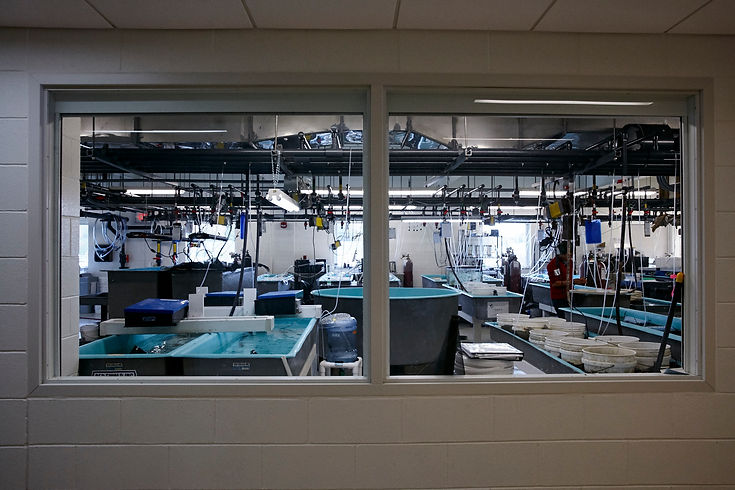
Restoration
Restoration in Shinnecock Bay
Shinnecock Bay is an estuary, a coastal body of water where land meets the sea and where freshwater and saltwater mix. The bay is very much impacted by what drains into it. Shinnecock Bay is surrounded by unsewered communities, where wastewater from septic tanks seeps untreated into bay waters. From the 1980s until the start of the ShiRP project, western Shinnecock Bay became increasingly degraded, plagued by polluted waters and harmful algae blooms like brown and red tides.
The Problem:
The state of the estuary in 2012 when we started:
-
Excess nitrogen from septic systems and groundwater flow into the estuary (untreated waste)
-
Algae and nutrients in the water become “unchecked” resulting in Harmful Algae Blooms such as brown, red, and rust tides that harm marine organisms and shade out light needed by eelgrass
-
Lack of shellfish: hard clams and oysters were once abundant. Overfishing and the introduction of brown tides in the 1980’s depressed hard clam populations to the point where densities were not high enough for them to effectively reproduce
-
No naturally occurring oyster reefs, undetectable natural recruitment of oysters
-
Eelgrass habitat declines
-
Increased water temperatures from climate change.
_edited.jpg)
The Vision:
After spending years researching bay conditions and documenting the problems, SoMAS scientists designed a “big picture” restoration approach that could tackle multiple problems at the same time. This restoration plan asked the right questions and used cumulative understanding from field studies and laboratory experiments to design science-based solutions.

Key Questions
-
Can we eliminate annual harmful algae blooms and improve water quality to healthy standards?
-
Can we achieve this goal by introducing biotic filtration in a big way?
-
Could planting high densities of hard clams back into the system benefit they bay two-fold – by filtering the water and then repopulating clams throughout the rest of the bay?


Science-based Solutions
The overarching goal for ShiRP was to improve water quality in the bay by increasing filtration capacity that had been lost with shellfish population declines. Shellfish like clams and oysters are “filter feeders” that keep harmful algae in check and mitigate the impact of excess nitrogen seeping into the bay from underground septic systems throughout the watershed. Restoring shellfish into the bay would filter the water, jump start natural reproduction, and create the conditions needed for eelgrass to grow and fish to thrive.
At the heart of ShiRP’s multi-faceted restoration approach is the creation of hard clam “spawner sanctuaries,” and is supplemented by the creation of oyster reefs and the expansion of eelgrass habitat. We consistently monitor the restoration, and the ecosystem at large, to measure success.




